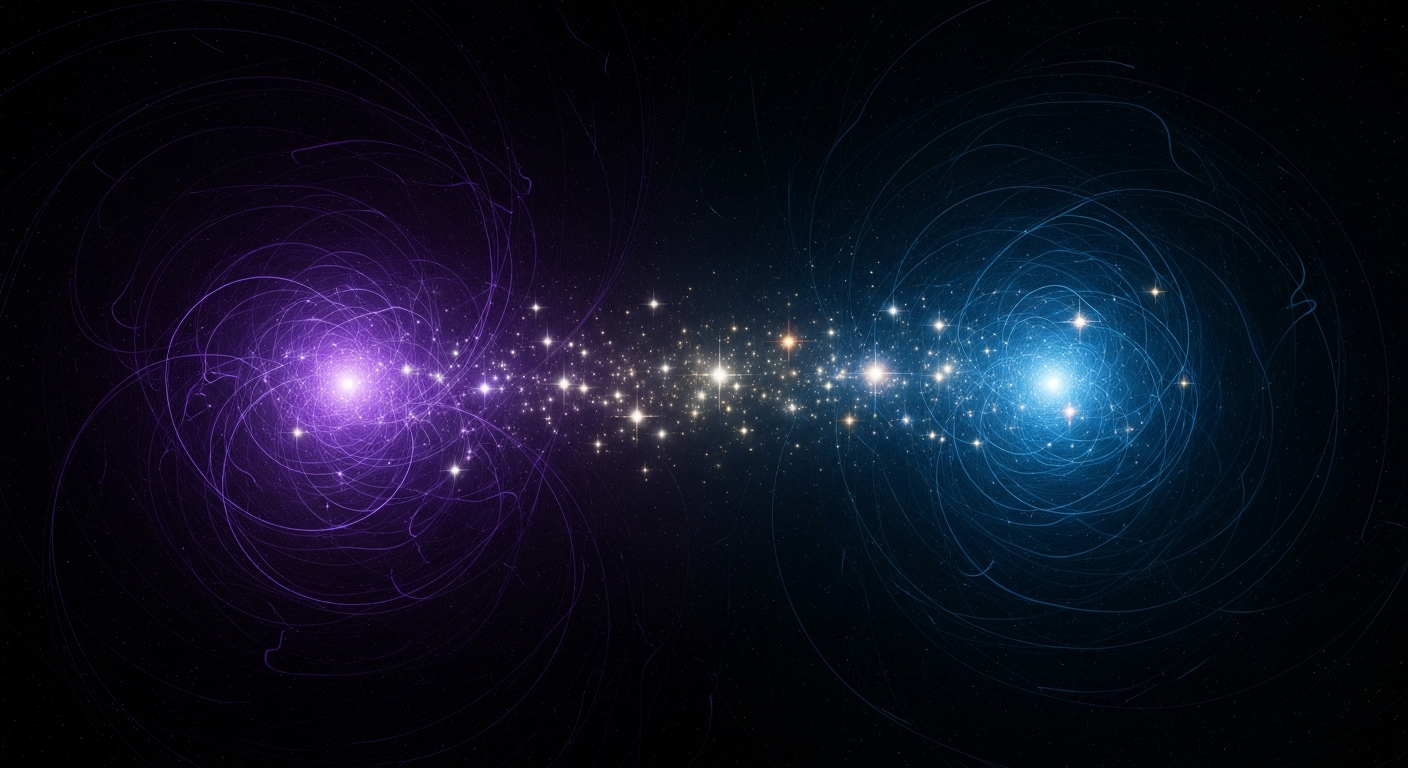The Dark Energy Survey Supernova Program: A Reanalysis Of Cosmology Results And Evidence For Evolving Dark Energy With An Updated Type Ia Supernova Calibration

The ongoing quest to understand the nature of dark energy, the mysterious component driving the accelerated expansion of the cosmos, has entered an era of precision measurement where systematic uncertainties are paramount. In a significant new contribution, a recent paper (2511.07517) presents a critical re-analysis of the Dark Energy Survey’s 5-year supernova sample (DES-SN5YR), providing an updated perspective on the evidence for evolving dark energy. This work, led by B. Popovic, with contributions from our group members R. Chen and M. Grayling, exemplifies the rigorous, self-correcting nature of scientific inquiry.
Recent cosmological analyses, particularly the original DES-SN5YR results when combined with Cosmic Microwave Background (CMB) data from Planck (1807.06209) and Baryon Acoustic Oscillation (BAO) measurements from DESI (2404.03012), had hinted at a fascinating possibility: that dark energy is not a simple cosmological constant (Λ). These findings pointed towards a dynamic, time-varying equation of state with a statistical significance of around 4.2σ, fueling excitement that we might be on the verge of discovering new fundamental physics beyond the standard ΛCDM model, a paradigm that has stood since the initial discovery of cosmic acceleration (10.1086/300499, 10.1086/307221).
A Meticulous Recalibration: The DES-Dovekie Sample
This new analysis revisits these tantalizing hints with a suite of methodological improvements, resulting in a fully recalibrated data sample named “DES-Dovekie.” The core of this work lies in addressing subtle but crucial systematic effects that could influence the final cosmological inference. The key enhancements include:
- Improved Photometric Cross-Calibration: The team implemented a more robust calibration across the different surveys contributing to the supernova sample. This includes leveraging recent observations of white dwarf stars as standard candles to better anchor the photometry between the high-redshift DES data and the essential low-redshift samples.
- Retrained Light Curve Model: The SALT3 model, used to fit the Type Ia supernova light curves and standardize their brightness, was retrained using the new, improved calibration solution.
- Corrected Host Galaxy Treatment: The analysis identified and fixed a numerical approximation in the implementation of the host galaxy color law, ensuring a more accurate treatment of dust extinction effects within the supernovae’s host environments.
Tempering Expectations: Updated Cosmological Constraints
By applying this refined analysis pipeline to the DES data, the authors derive updated cosmological constraints that temper the previous evidence for evolving dark energy. When combining the new DES-Dovekie sample with CMB and BAO data in a Flat $w_0 w_a$CDM cosmology, the results show:
- A reduced statistical significance for deviation from a cosmological constant. The tension with ΛCDM drops from 4.2σ to 3.2σ. While still noteworthy, this pulls the result back from the threshold of a major discovery.
- A weakened Bayesian preference for an evolving model. The Bayesian evidence, which penalizes more complex models, now shows only a “weak preference” for the evolving dark energy model ($w_0 w_a$CDM) over standard ΛCDM, with odds of approximately 5:1. This is a significant downgrade from what would have been considered strong evidence previously.
- The updated parameters for the dark energy equation of state are found to be $w_0 = -0.803 \pm 0.054$ and $w_a = -0.72 \pm 0.21$.
This work is a powerful demonstration of the principles that guide our research group: a commitment to rigorous Bayesian data analysis and a deep understanding of the instrumental and astrophysical systematics that underpin modern cosmology. While the allure of new physics may have slightly dimmed, the foundation for future discovery is now significantly stronger. The DES-Dovekie dataset represents the most meticulously calibrated high-redshift supernova sample to date, providing a crucial resource for testing the cosmological model with ever-increasing precision.


Content generated by gemini-2.5-pro using this prompt.
Image generated by imagen-4.0-generate-001 using this prompt.